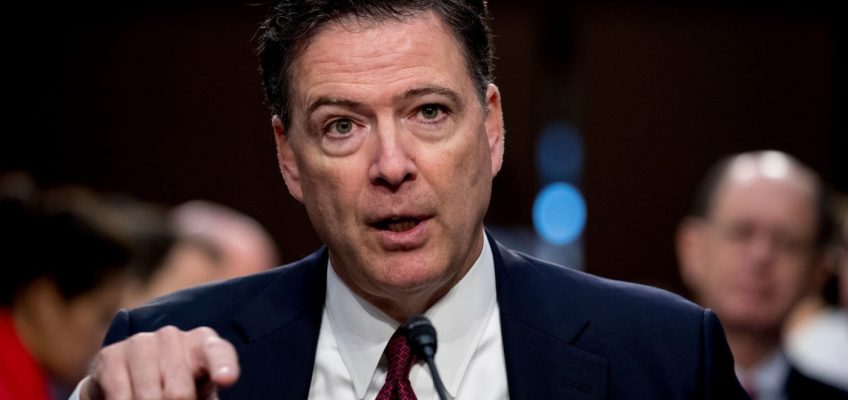After little more than a year sub-leasing offices on Wabasha Street in downtown St. Paul, FreezPak Logistics needed space to expand its national transportation sales and marketing hub. The New Jersey-based cold storage and food delivery company recently signed a long-term lease at Infor Commons, a 13-story office building on St. Peter Street, for 6,500 square feet near the top level. With buildout near completion, the company’s workspace will soon nearly triple.
“We thought originally we were going to put it in New Jersey,” said Mo Shearer, FreezPak’s senior vice president of transportation. “As we continued to recruit and people applied, we saw more and more applicants from the Twin Cities. Rather than ask them to uproot their families to the East Coast, I moved here from Maryland.”
FreezPak Logistics senior vice-presidents Mat Rasmussen, left, and Mo Shearer in their new office space in the Infor Commons building in downtown St. Paul on Wednesday, June 4, 2025. (John Autey / Pioneer Press)
At the same time, the Jacobson Law Group was looking to relocate its 16 attorneys from the Great Northern Building on Fifth Street in Lowertown but stay in St. Paul. By the end of June, they’ll fill 7,400 square feet at Infor Commons, once known as Lawson Commons. Between them, the two companies are sliding in like Tetris pieces to spaces that had been given up in 2023 by Travelers Insurance, which still occupies multiple floors within the office tower that has finally begun to build back tenancies in the post-pandemic era.
No, Infor Commons isn’t back above 90% occupancy, the kind of numbers it enjoyed before remote work went into full swing in 2020.
Still, “we stabilized and are now growing,” said Jerry Hersman, vice president with Frauenshuh Property Management, who recently renewed a five-year lease with one of his building’s most long-standing tenants, Kincaid’s Fish, Chop and Steakhouse.
Reshuffling
Some may see commercial tenants relocating within downtown St. Paul as “kind of shifting the deck chairs around the Titanic a little bit,” acknowledged Hersman.
Nevertheless, as state government and other employers require more workers to return to job sites in person at least part time, there will be winners and losers downtown, with more reshuffling to come.
While the implosion of Madison Equities, downtown St. Paul’s largest property owner, and the exodus of foot traffic in the era of remote work have indeed cast dark clouds over many of the city’s most iconic buildings, property managers still hope to gain from the consolidation of restaurant, retail and office tenants in key properties, as well as some new arrivals, even as nearby properties decline.
The city of St. Paul has launched a “space use study” that seeks to determine if many of its downtown offices could be consolidated on the ninth floor of the Osborn 370 building on Wabasha Street, which has offered the city an eight-year lease, with the first year being rent-free. Based on the study’s findings, the city could reconfigure existing office space within the City Hall Annex building across the street from City Hall on Fourth Street, or empty the annex building out completely, which could position it for conversion to residences.
At the Great Northern Building, skyways had grown eerily silent and security and maintenance had become “virtually non-existent,” said Jacobson shareholder Joseph Halloran. No one from property management at the Great Northern made an effort to get the firm to stick around at the end of their 10-year lease, he said.
“We were ready to grow this space a while ago, but we weren’t going to do it until we saw an improvement in the environment or the management of the building. That didn’t happen,” said Halloran, who is looking forward to better days ahead at Infor Commons, which sits closer to Rice Park.
A hint of promise
For some industry observers, lateral movement to new locations within the same downtown carries at least a hint of promise. After all, empty offices and retail also mean there’s plenty of room for growth.
“Having one full building and one empty building is a lot better than two half-empty buildings,” said Joe Spencer, president and chief executive officer of the St. Paul Downtown Alliance, a partnership between City Hall and major downtown employers. “That allows the vacant building to transition to housing or other new uses.”
Sherman Associates’ recent conversion of the 25-story Landmark Towers office building on St. Peter Street into luxury housing has already paid off for properties like Infor Commons, which had a tough go of it coming out of the pandemic.
“After right-sizing post-COVID, we dropped down to 70% occupancy, which is our bottom,” Hersman said. Then, about three years ago, Morgan Stanley wealth management and the Minnesota Chamber of Commerce exited Landmark Towers, which is now fully residential, and landed at Infor Commons, filling 24,000 square feet between them.
In late May, Hersman was happy to share that he had three more lease renewals under negotiation, as well as a handful of potential new leases in the works. That’s a positive trend in a downtown where a third of office space sits vacant, and as much as 40% of downtown’s competitive office market has been listed for sale, according to the Greater St. Paul Building Owners and Managers Association.
“We’re committed to staying here in downtown St. Paul,” said FreezPak’s Shearer. “We’re in a longer lease. I’m coming from the East Coast, and I was pleasantly surprised how much there was to offer in the Twin Cities.”
Your Money: What octogenarians want you to know
Working Strategies: Using AI while maintaining core skills
3 surprising market winners in 2025
St. Paul Corner Drug closing historic soda fountain
Longtime Grand Avenue fabric shop Treadle Yard Goods has closed amid owner’s cancer battle
Alliance Bank Center skyway tenants move to Town Square
Some skyway businesses quickly landed in neighboring buildings after Madison Equities stopped paying utilities at the Alliance Bank Center and the property was condemned by the city. Their experiences have been mixed.
Bilal Saleem, better known as Mr. B, was one of the last tenants to leave the Alliance Bank Center and one of the first to open up shop in a glassy, brightly-lit space between the Town Square food court and the skyway entrance to the DoubleTree by Hilton Hotel, just above the Minnesota Department of Motor Vehicles. As DMV customers come upstairs for a snack, they happen upon his barbershop, which has been a boon for business.
He’s planning a grand opening celebration with food and service discounts from 11 a.m. to 2 p.m. on June 13.
“I’m happy here. I love it,” said Saleem, who has worked out of at least four locations downtown across some 20 years. “It’s a step above the rest. It’s a stress-free environment.”
Bob Wolf, of Greenwolf Hemp and Organics, and Paul Hartquist Jeweler also landed at Town Square, next to the shuttered skyway entrance to the condemned Alliance Bank Center. Without the building-to-building foot traffic, Wolf noted he’s basically at the end of a dead-end street, which has hurt his business. Hoping to boost his store’s visibility, he hosted a musician for a Jimmy Buffett-style skyway celebration on May 29 and offered free samples of his wares.
“Let people walk through,” said Wolf. “Open up the skyway!”
Even before the death of Madison Equities principal Jim Crockarell last year, major employers like Cray supercomputers, TKDA engineering and Wold Architects had left St. Paul for Bloomington or Minneapolis. Madison Equities has put most of its commercial properties downtown up for sale, and has already lost some buildings to foreclosure. As those buildings empty, there could be at least a small silver lining for some properties around them.
“Obviously, the 1.3 million-square-foot Crockarell portfolio looms large,” said Rhett Carlson, a development associate with Sherman Associates. “If all that was taken offline tomorrow, then yes, that’d zap downtown vacancy and be a boon to the (higher-end) Class A towers.”
He noted, however, that businesses leaving downtown buildings have plenty of options to choose from outside the city, including and beyond Minneapolis, and in the digital era, even outside of physical space.
“The ‘flight to quality’ is the cliche thrown around,” said Carlson, who puts more faith in office-to-residential conversions like Landmark Towers. “The struggle of having a two-‘Central Business District’ metro seems more evident than ever. And law offices don’t have to have physical files in any city.”
It’s clear to commercial brokers and property managers that there are some tough times ahead for downtown. The biggest wild card in some property managers’ eyes? The state of Minnesota.
State workers to return downtown
Gov. Tim Walz called thousands of state employees back to the office at least half time as of June 1, though ongoing pushback from employee unions has led the governor to offer exceptions to those workers who live more than 50 miles away. St. Paul Mayor Melvin Carter called city government workers back to the office three times per week as of April 1.
Given office consolidations, the return of upwards of 20,000 state employees, which is still opposed by some labor unions, will not be a major benefit for every property the state once occupied. For instance, leases for the state Department of Health expired last year at the Golden Rule Building on Seventh Place, emptying two floors.
Rather than relocate within downtown proper, the offices consolidated in state-owned space within the Freeman Building, which sits inside the Capitol campus on Robert Street, outside of downtown.
As far as state workers returning, “it’s kind of a wild card in that we don’t really know how all of that is going to shake out yet,” said Tina Gassman, president of the Greater St. Paul Building Owners and Managers Association. “It can be a boon, but if tenants are moving out of downtown leased space, that helps less so than we would hope.”
Still, some state employees will indeed return to the downtown core. Since 2021, the state has leased approximately 207,000 square feet in the Great Northern Building on Fifth Street, which houses the Minnesota Department of Employment and Economic Development, among other state offices.
The St. Paul Port Authority, which owns and operates Treasure Island Center, is looking forward to the return of as many as 250 state employees as Minnesota Housing calls its workers back to the office. Minnesota Hockey, the statewide governing body of amateur hockey, and the two-time PWHL champion Minnesota Frost have also moved into the building.
Commerce is already filling in around them. Afro Deli, which sits across the street, plans to relocate this summer to the Treasure Island Center food counter previously occupied by Slice Pizza, occupying the empty space near Walgreens and the Pillbox Tavern.
“There is a lot of great activity happening at the Treasure Island Center,” said Ashley Aram, a Port Authority spokesperson.
Lowertown blues and revival?
The return of more state workers can’t come soon enough for some downtown business owners. Fed up after examining surveillance video and finding a drug user had repeatedly broken into the Railroader Printing building’s private bathroom, public relations executive Joe Thornton and other employees of Aimclear digital marketing considered a few months ago whether it was time to relocate to the suburbs or go fully remote.
Their perch above the Bulldog restaurant and Mears Park had been good to them over the years. Still, Madison Equities’ vacant Park Square Court building — which adjoins the Railroader Printing building — has fallen into neglect and disrepair, with visible evidence of squatters defecating in a corner.
Then came January. That’s when St. Paul’s Downtown Improvement District expanded into Lowertown, bringing with it street safety and cleaning ambassadors available with a call to a pager to walk workers to their cars or remove blankets, shoes and other detritus abandoned in the skyway. St. Paul police identified the repeat drug user who had broken into the bathroom and convinced him to move along.
Even the Green Line light-rail station near the Union Depot, long a magnet for litter and loitering, has gotten cleaner, as has Mears Park, Thornton said.
Quarterly meetings between downtown businesses and representatives of the mayor’s office have sometimes been tense, but they’ve also led to introductions to the court-appointed receiver now overseeing the Park Square Court building, which has been reassuring, Thornton said.
With those and other improvements in mind, Aimclear made the decision to stay in Lowertown.
Thornton noted downtowns everywhere have been impacted by remote work, the housing crisis, the fentanyl crisis and other pressures.
“We have an almost identical office up in Duluth, and we’ve had many of the same problems,” he said. “We could easily move both offices or go full remote, but … we’re here. We’re going to be sitting above Bulldog for as long as we can see into the foreseeable future.”
St. Paul Corner Drug closing historic soda fountain
Officers in Minneapolis raid wore distinct patches. One was authorized, another wasn’t, feds say.
Longtime Grand Avenue fabric shop Treadle Yard Goods has closed amid owner’s cancer battle
‘We feel relief’: Derrick Thompson found guilty in Minneapolis crash that killed five young women
Minneapolis man sentenced for stabbing, hanging St. Paul woman’s dog after argument




